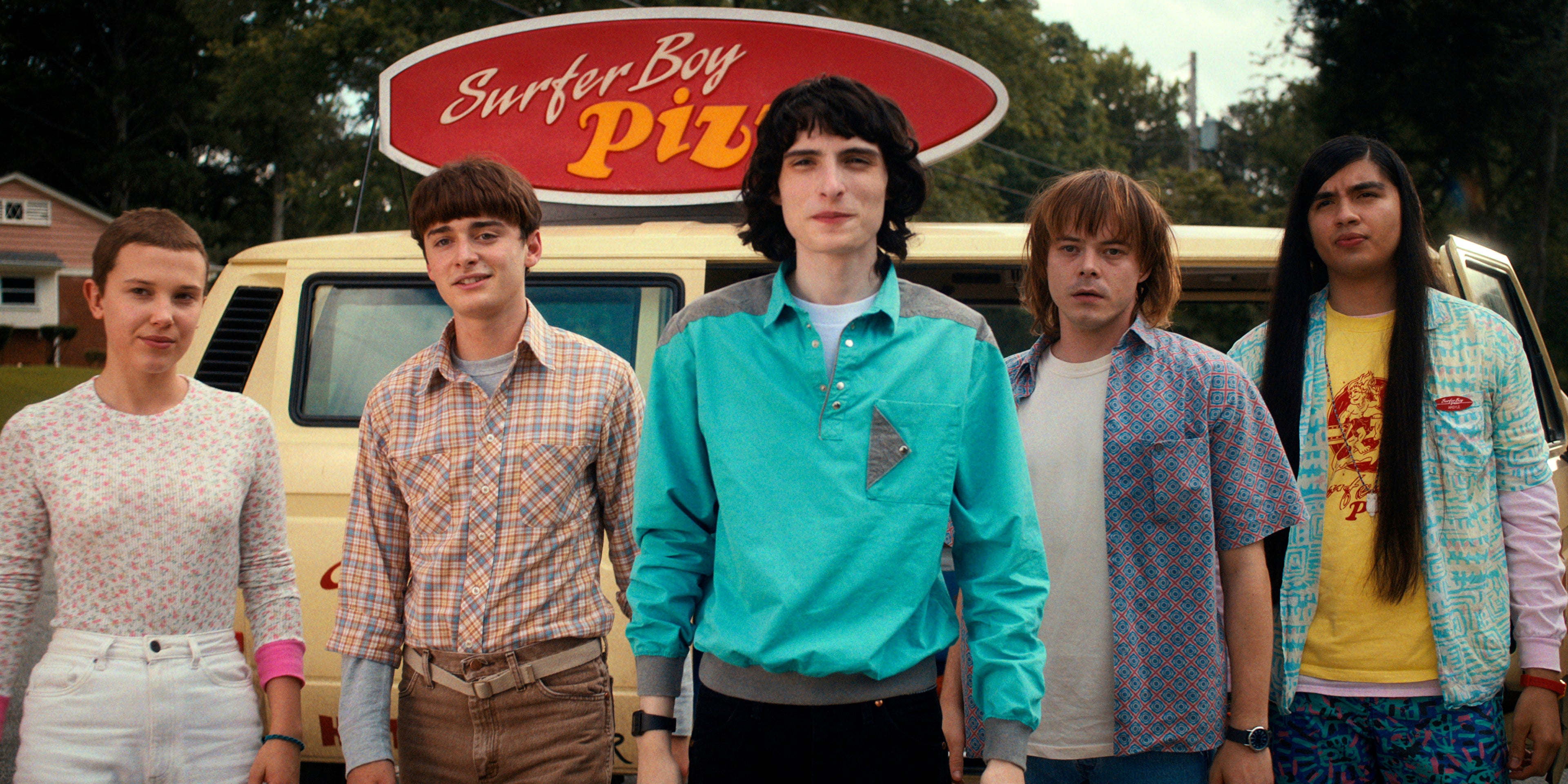Do good things really come to those who wait? Not in the world of modern television, where waiting has become the default mode of engagement and what does eventually show up on screen can seldom be described as good. Nowadays, it’s common for audiences to wait years between seasons of TV – more than three per season, in the case of big-hitters such as Stranger Things or The Last of Us. But it’s not just august, effects-filled blockbusters that have adopted this slow-burn approach. Everywhere you look, television seems stuck in molasses.
This weekend, BBC One’s heist drama The Gold returns after a hiatus of nearly two years. In the current scheme of things, its turnaround was relatively prompt: Nicole Kidman’s middlingly received Hulu drama Nine Perfect Strangers came back last month, nearly four full years after the first season debuted. Wednesday, the third biggest series in Netflix’s history, is gearing up to release its second season, over two and a half years after its first. While some of the delays can be attributed to the 2023 industry strikes, the real problem runs deeper than that.
It’s no coincidence that television’s move towards a slower production model has coincided with the phenomenon of what we might call the “first-season cliff-edge” – shows that achieve significant popularity when they come out, only for interest to drop off drastically by the time season two rolls around. This can be seen, in various degrees of starkness, in series from Squid Game to House of the Dragon, to The Night Agent, to The Lord of the Rings: The Rings of Power, to The Old Man. Often the break is so long that some viewers simply lose interest, or forget about the first season entirely.
It’s not just an annoying trend for the patience-poor among us; it contradicts the fundamental appeal of TV storytelling. Historically, TV was a medium of continuity and everpresence, an artform that drew power and structure from its sustained residence in our lives. The old US production system was devised to make the most of this. Take, for instance, ER or The West Wing. In many ways, these shows are obvious precursors for what is now often described as “prestige TV”: they were serialised and awards-laden, with big stars, middlebrow sensibilities and Hollywood budgets. Unlike modern “prestige TV”, however, series such as ER and The West Wing did not air eight or 10 episodes and then disappear for three years. They aired 22 episodes each season, usually between September and May, and then by next September, they were back with more.
It’s worth noting, too, that the shorter turnaround seemed no impediment whatsoever to the creative merit of a show. Some of the best TV shows ever made – from dramas (The Wire, for instance) to comedies (Seinfeld) to animations (The Simpsons) were produced within a matter of months between seasons. There is often a notion now that TV takes longer to write because of a sort of quality control. And, fair enough, on a series like Stranger Things, where tens of millions of dollars are being pumped into each episode, there must be a real pressure to try and get the script right before shooting even begins. But historically, greatness has been achievable on a shockingly tight timeline.
Indeed, there were a lot of advantages to this old model, both creative and logistical. Longer seasons often provided the opportunity for writers to re-tool programmes partway through a run, to double-down on the characters and plotlines that worked, and tinker with – or remove – those that didn’t. It provided steady, more or less year-round employment for cast and crew, and, in a pre-DVD, pre-streaming age, ensured that there would be enough material produced to fill the significant demands of a daily broadcast schedule. And the more episodes were made, the better for all involved; hitting the 100-episode mark was understood to mean syndicated reruns, a lucrative prospect for those responsible for creating a TV show.
It’s hard to over-emphasise just how radically the TV production model has been altered by the advent of streaming. For one, it has decimated the significance of reruns. Production and distribution have been, for the most part, vertically integrated: Netflix produces and streams Netflix shows; Disney produces and releases Disney shows. The expensive deals for the rights to a show’s back catalogue (streaming’s equivalent of the syndicated rerun bonanza) are more or less exclusively reserved for old, pre-streaming favourites – for example, when Netflix paid $500m (£370m) for the rights to host Seinfeld in 2021. For new shows, therefore, the incentive to produce vast amounts of episodes as quickly as possible simply isn’t there. The opposite might actually be true: it is the promise of content to come that is often used to snare, and keep, subscribers; delivering that content as quickly as possible could be seen as being counterintuitive to the business model.

There are other reasons, of course, why TV producers have become such slowpokes. Some of it comes down to events outside their control: the Covid pandemic and its knock-on effects, for instance, followed by the 2023 writers’ and actors’ strikes that brought Hollywood to a standstill. The ballooning financial scale of high-end TV productions is a major factor: series such as Stranger Things, or Disney+’s Star Wars spin-off Andor (which took a three-year gap between its two seasons), have the budgets of major blockbuster films and require extensive, time-consuming work across all areas of production, including digital effects. (Andor cost a staggering $600m for two 12-episode seasons.) The ramifications of these big-budget endeavours chew up time in ways that might not necessarily be obvious. Bigger budgets mean bigger stars. Bigger stars mean more intermediaries; more demands; more complicated scheduling requirements.
The globalised nature of streaming distribution also contributes to the delays. New TV shows on, say, Netflix, are released simultaneously around the world, with dubbed versions available in multiple different languages. The dubbing process is, however, time-consuming, and in itself requires months of work when a show is in a late stage of post-production.
But there are some advantages to the slow production approach. The old TV model had the potential to be brutal on cast and crew. At the extreme end of the spectrum, we have something like NYPD Blue, the brilliant and groundbreaking cop show that ran for 12 seasons between 1993 and 2005. Working on NYPD Blue was an exercise in manic adaptation, with showrunner David Milch delivering constant, on-the-fly script revisions – it was a punishing workflow that contributed to the series’ busy turnover of actors, one that would never fly now.
And yet there are a few contemporary outliers. Emmy-winning dramedy The Bear returns this month for its fourth season in four years, having managed to maintain a high level of quality despite a relatively speedy turnaround. The Pitt – HBO Max’s ER-styled medical drama that won rave reviews and an ardent fanbase when it debuted in the US back in January – is already underway making a follow-up season, with plans to return a year after the first season premiered. There are conceptual factors that mean this turnaround is possible: both shows are mostly set in a single location (The Bear within the eponymous restaurant and The Pitt in the emergency department of a Pittsburgh hospital) and involve minimal post-production special effects.

You may have noticed, too, that most of the shows mentioned here have been American: Britain has historically favoured a more patient approach, with far shorter episode orders each season. It’s a matter of finances, on the one hand, and a reflection of the different approaches to writing on the other. (The UK traditionally would use one writer for a given TV show, while the US would have a staffed writers’ room – making 22-episode seasons drastically more feasible.) As such, the fact that The Gold – written solely by Neil Forsyth – took a two-year inter-series hiatus isn’t the result of some abnormal delay, but pretty standard for any BBC series of its ilk. With American TV having increasingly migrated towards a “UK-style” approach to commissioning – six, eight and 10-episode seasons are now ubiquitous – it may be that we here were ahead of the curve. But is that really a good thing?
The success of shows such as The Bear and The Pitt will hopefully give networks pause for thought. Ultimately, television is a medium that thrives in abundance; the prospect of waiting three years to watch eight serialised “blockbuster movies” (to borrow a term from the creators of Stranger Things) is simply not that appealing. Revenge may be the dish best served cold. But television, like most other dishes, is best served piping hot – just as it always used to be.







